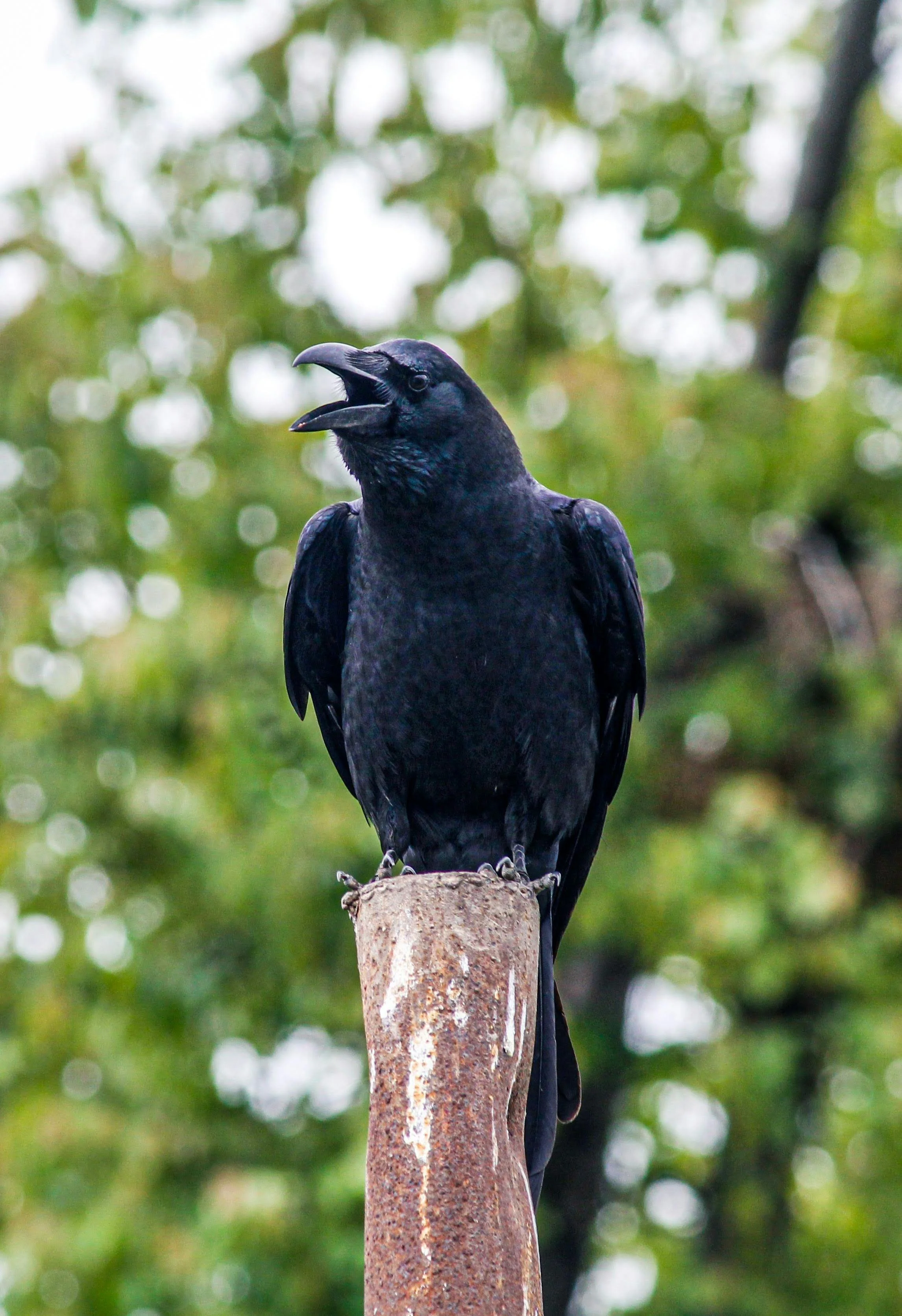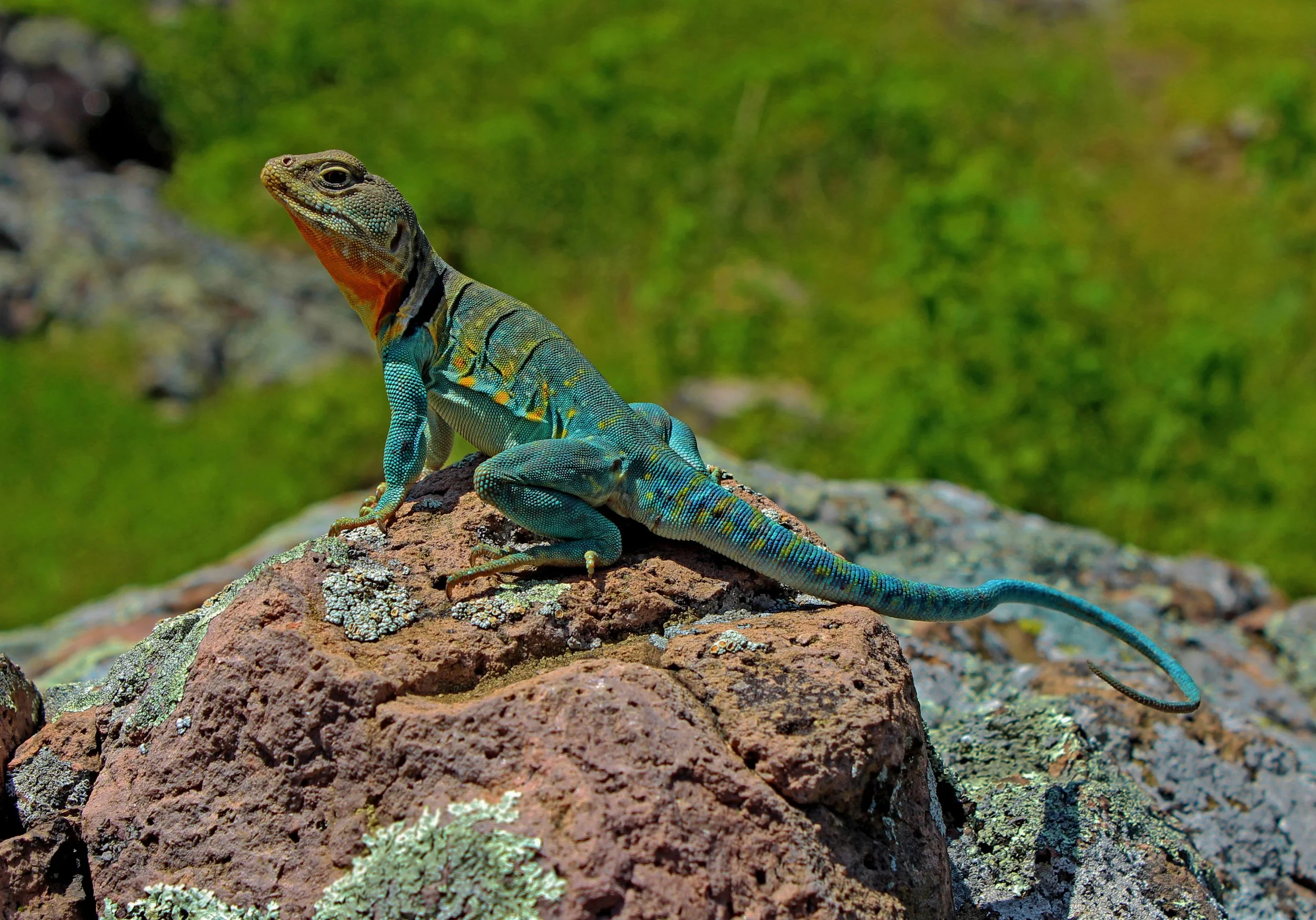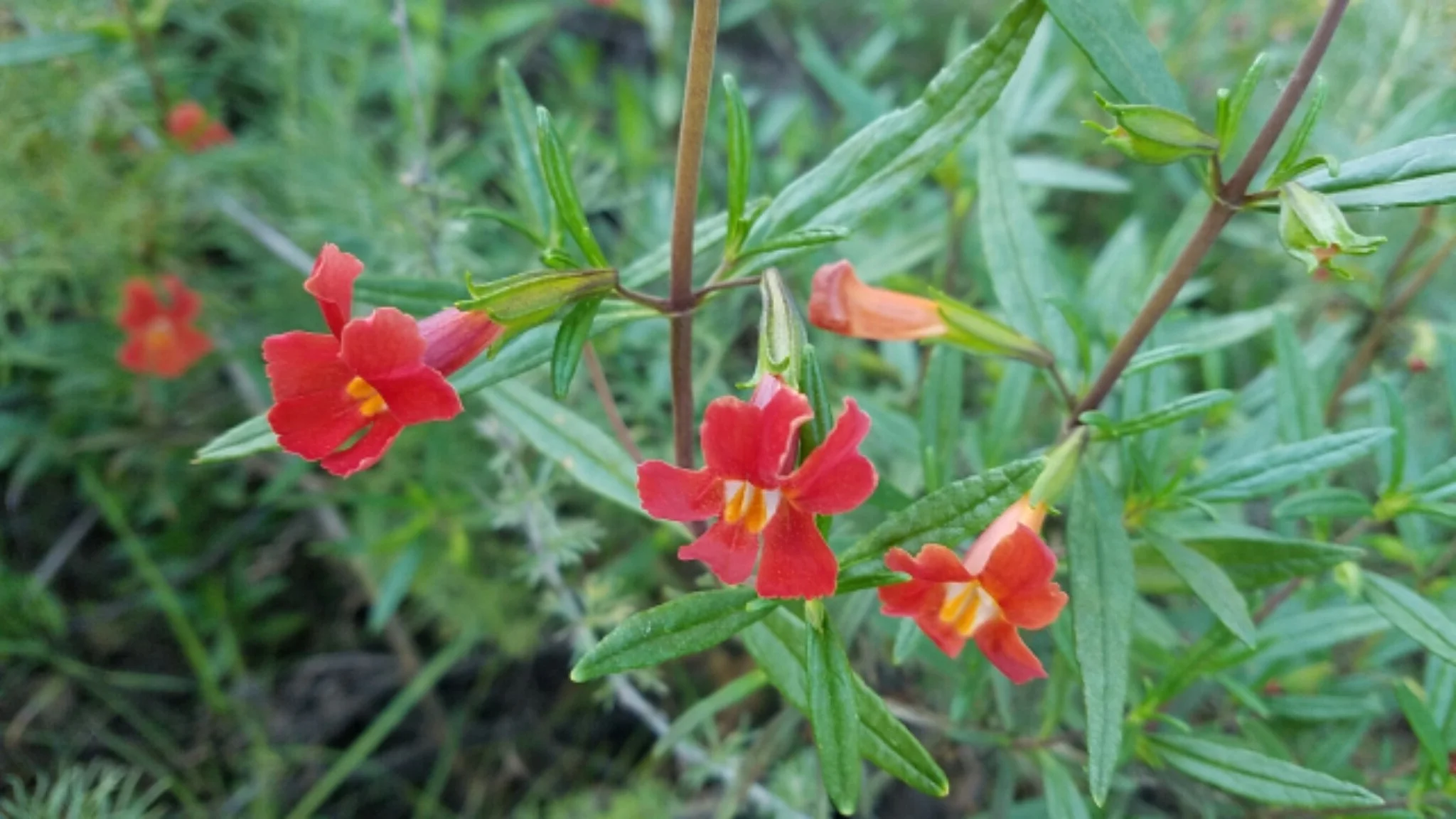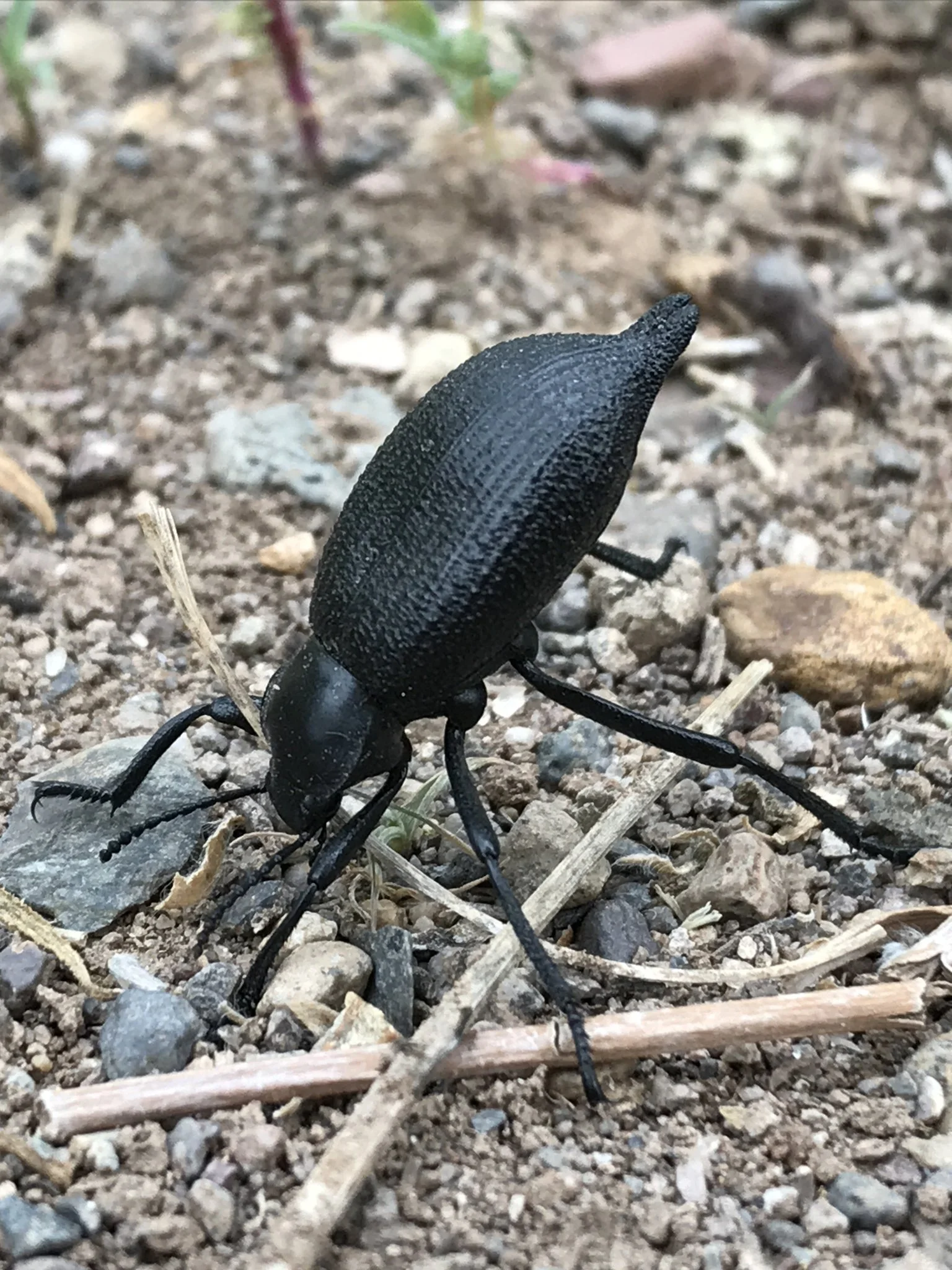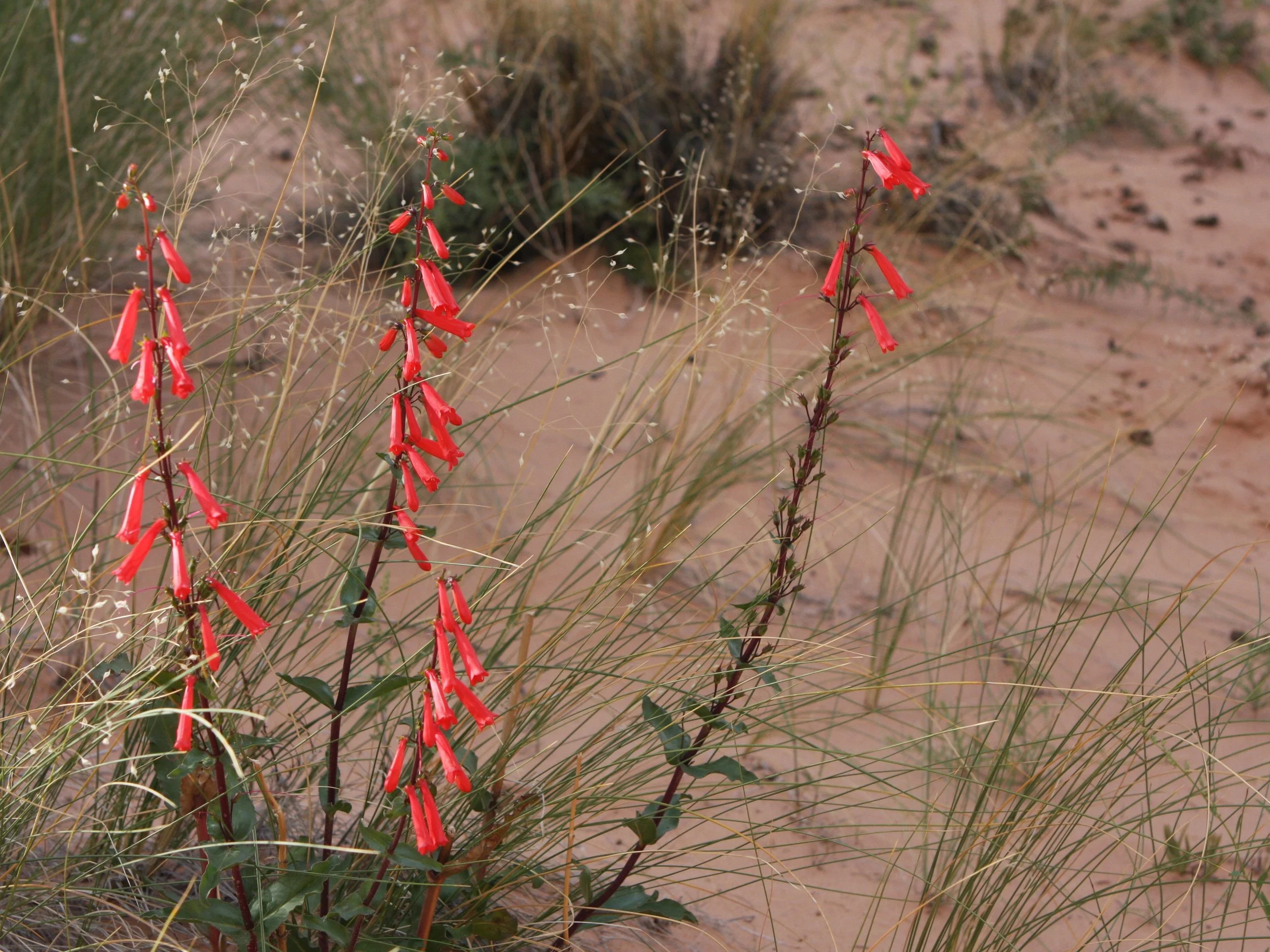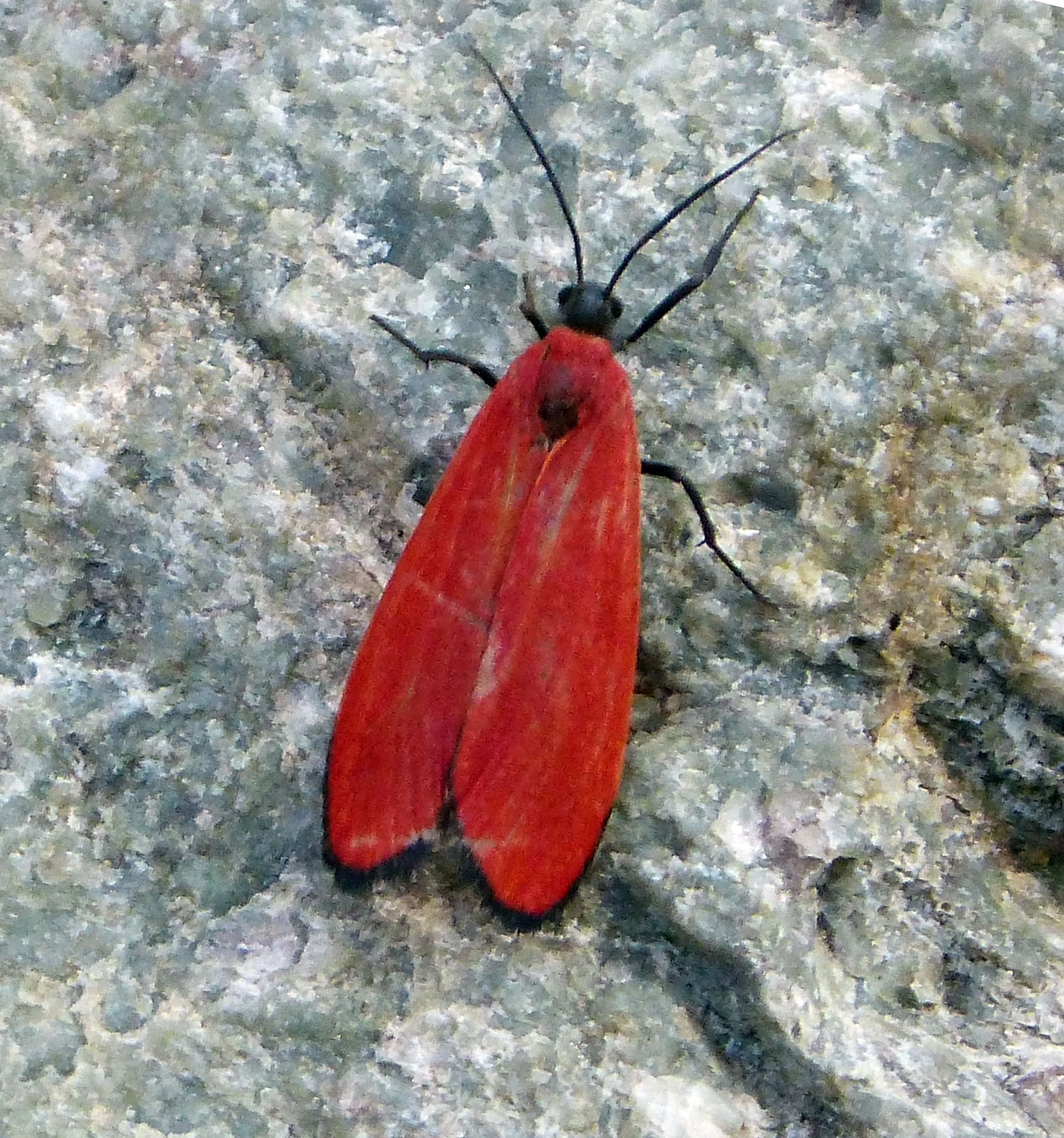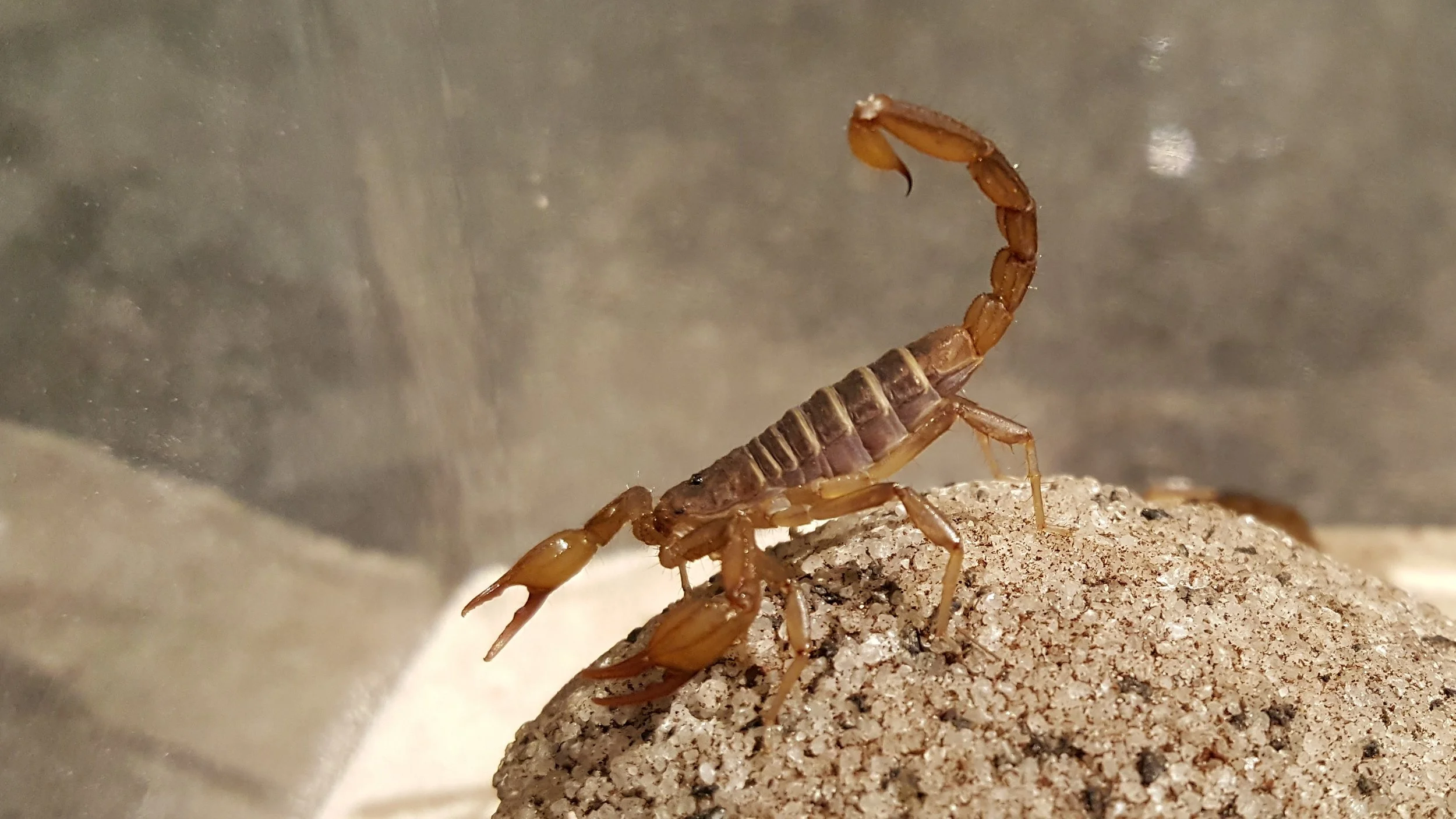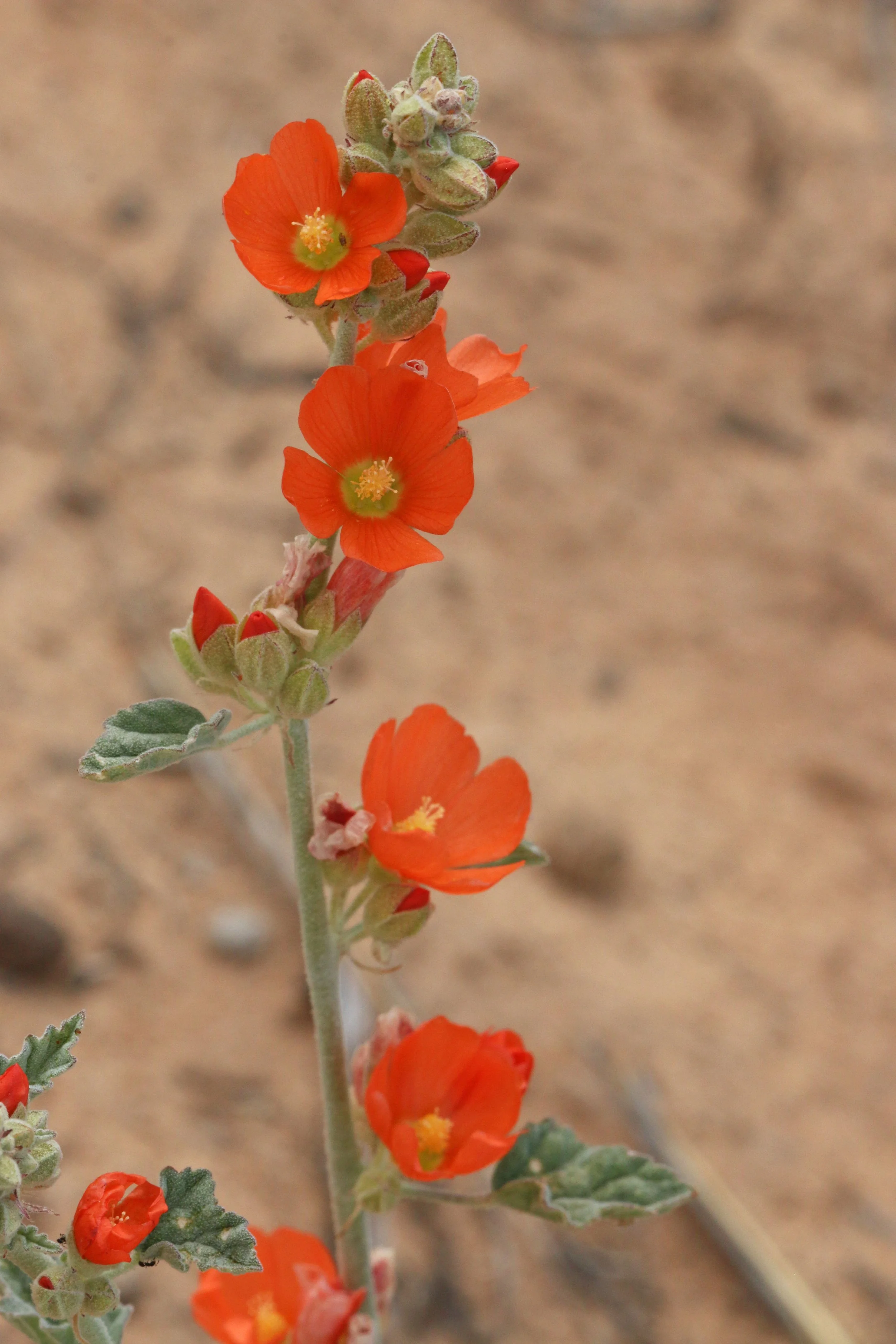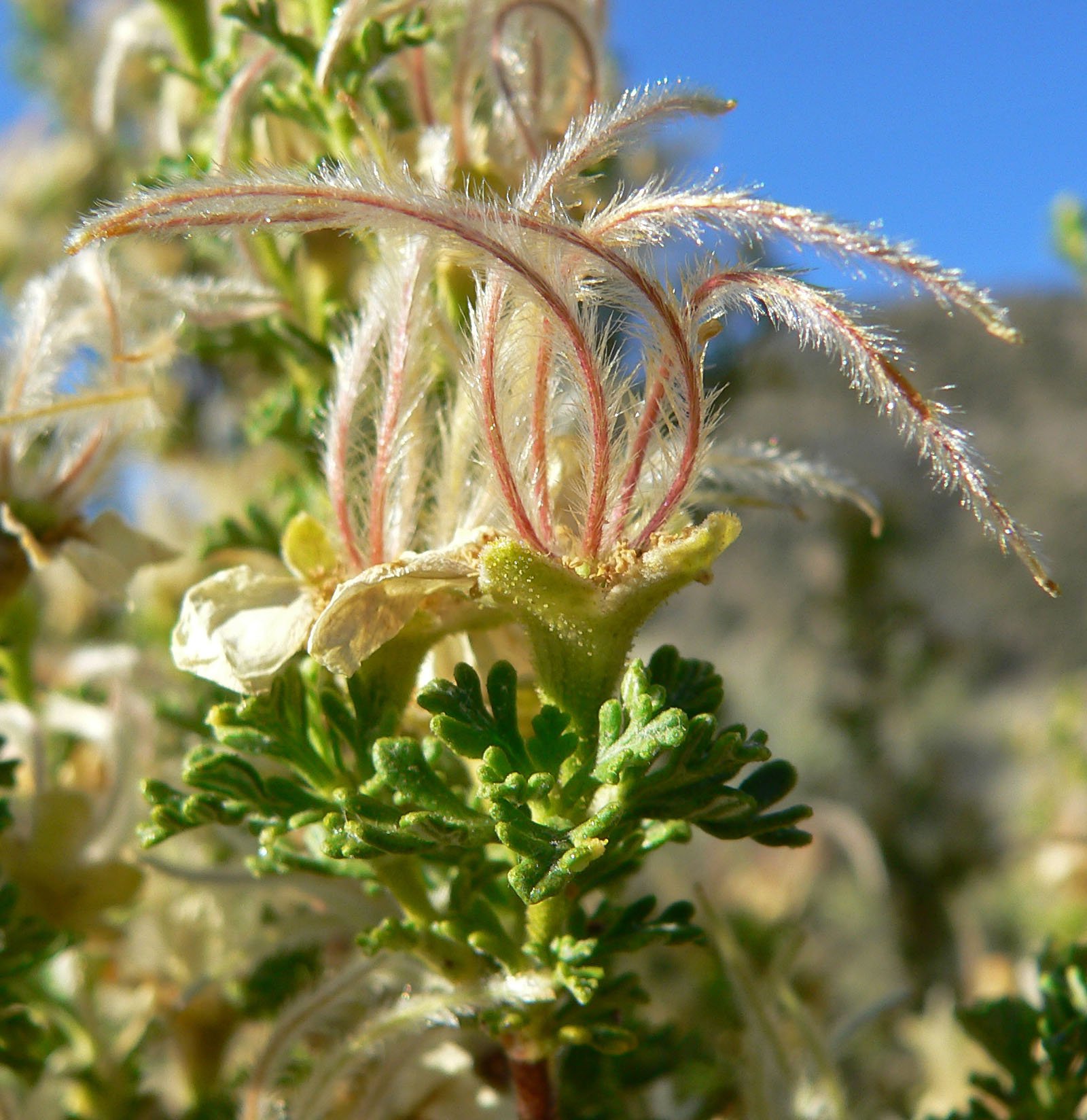Landmark Series—Behind the Bandana: Delicate Arch, Arches National Park
Guest User
(Source: WikiCommons, B2Belgium)
In a park boasting over 2,000 stone arches, one stands out as a symbol of Utah and one of the world's most famous geologic features: Delicate Arch. This free-standing arch, with a light opening 46 feet high and 32 feet wide, is the largest in the park. It has had various names throughout history, including "Cowboy's Chaps" and "Old Maid's Bloomers," before being described as "Delicate" in a 1934 article. The park's fragile desert ecosystem relies on biological soil crust, composed of mosses, algae, fungi, and cyanobacteria, which protects against erosion and generates oxygen. With over 483 plant species, the park is also an International Dark Sky Park, emphasizing the importance of staying on marked trails to preserve its natural beauty.
Let the Delicate Arch Landmark Bandana be your guidebook to native flora and fauna on your next visit. Here is a closer look at the featured species:
Black-Tailed Jackrabbit
Common Raven
Desert Paintbrush
Eastern Collared Lizard
Eastwood’s Monkeyflower
Eleodes Caudifera
Firecracker Penstemon
Kit Fox
Lycomorpha Splendens Moth
Northern Scorpion
Small-Leaf Globemallow
Stansbury Cliffrose
Western Pygmy Blue Butterfly
Woolly Locoweed
FIELD GUIDE:
Land Acknowledgement:
Arches National Park is the ancestral homeland of the Hopi Tribe, Las Vegas Tribe of Paiute Indians, Moapa Band of Paiute Indians, Navajo Nation, Rosebud Sioux, Southern Ute Indian Tribe, Ute Indian Tribe of Uintah and Ouray Reservation, Ute Mountain Ute Tribe, White Mesa Ute, and the Zuni Tribe—the original and continued stewards of this land.
#1. Black-Tailed Jackrabbit (Lepus californicus)
(Source: WikiCommons, Pocketthis)
The black-tailed jackrabbit is easily identified by its huge, black-tipped ears and tail. Adapted to lose heat through their ears, these hares have large eyes positioned for nearly 360-degree vision, helping them spot predators. Preferring open, flat habitats such as desert scrub and mesquite grasslands, they range from Baja California and south-central Mexico to the western United States. Not threatened or endangered, they are herbivores, feeding on grasses, leaves, and cacti. Predators include coyotes, hawks, and bobcats. Jackrabbits rest in shallow depressions and do not live in burrows, often foraging in groups. Females give birth in thick brush or lined depressions. They live 2-5 years in the wild and can weigh 3-7 pounds. Despite their name, jackrabbits are actually hares, known for running up to 40 mph in short bursts. Baby jackrabbits are called leverets.
#2. COMMON RAVEN (CORVUS CORAX)
Ravens are renowned for their exceptional intelligence, often outsmarting even the most inventive scientific puzzles. The Common Raven displays impressive aerial feats, performing rolls and somersaults with acrobatic finesse. Young ravens exhibit playful behaviors, engaging in games with sticks by repeatedly dropping and catching them midair. Their intelligence also extends to understanding cause and effect; studies in Wyoming have shown that during hunting season, ravens are attracted to the sound of gunshots, anticipating a potential food source, while they ignore similarly loud but innocuous sounds like airhorns or car doors slamming.
Not only are Common Ravens adept mimics of other bird calls, but they can also learn to imitate human speech when raised in captivity. There's even an anecdote of a Common Raven raised from birth that learned to repeat the word “nevermore,” showcasing their remarkable vocal abilities and adaptability. Listen to the Raven’s call here.
#3. Desert Paintbrush (Castilleja chromosa)
(Source: WikiCommons, Holly Cheng)
The desert paintbrush, an herbaceous plant, brightens dry bushy slopes and sagebrush scrub across the western U.S. from April to June. Its showy 'flower petals' are actually 3 to 5 lobed bracts, ranging from red to orange to yellow, with the yellow-green flower tucked between them. The plant's hairy, slightly grey/brown appearance and narrow, lobed leaves add to its distinctive look. As a hemiparasite, it thrives by parasitizing the roots of host plants. The Navajo used desert paintbrush to make a drug for gastrointestinal issues. In the Truckee Meadows, it can be seen in Hidden Valley Regional Park and is also known as northwestern paintbrush.
#4. Eastern Collared Lizard (Crotaphytus collaris)
(Source: WikiCommons, Animalparty, Wilfredor)
The collared lizard (Crotaphytus collaris) is easily identified by two black collars around its neck. Males are bright green with tan, olive, brown, bluish, and yellow scales, while females are less colorful. Both sexes have whitish bellies and large heads. Unique among lizards, collared lizards can run on their hind legs with strides up to three times their body length. Found in diverse habitats, including sagebrush and deserts, they prefer rocky areas with open vegetation. Their range spans from Missouri to Utah, Nevada, southeastern California, Arizona, parts of New Mexico, and northern Mexico, including eastern Baja California. They are not currently threatened or endangered. Their diet includes insects and other lizards. Predators include larger lizards, birds like roadrunners, coyotes, and house cats. Collared lizards live 5-8 years, reaching up to 10 inches in length, with males being larger. Female collared lizards develop bright red splotches when carrying eggs and lay 1-13 eggs in early summer, leaving hatchlings to fend for themselves.
#5. Eastwood’s Monkeyflower (Mimulus eastwoodiae)
Unfortunately there are no free images of Eastwood’s Monkey Flower but this is a close relative, the Red Bush Monkeyflower (Source: WikiCommons, Toyonbro)
The showy, bilaterally symmetrical flowers feature five united lobed scarlet/orange-red tubular petals, five angled sepals, and four stamens, measuring 1 to 1.8 inches long. These flowers are pollinated by insects and hummingbirds. The fruit is a two-chambered capsule. This species blooms in Arches National Park during September and October, thriving in seeps and hanging gardens. It can also be seen on the Corona Arch trail outside the park. The genus name "Mimulus" comes from the Latin “mimus,” referring to the flowers' mimicry of a monkey's face, while "eastwoodiae" honors botanist Alice Eastwood. The Figwort family is notable for its ornamentals and the cardiac glycosides derived from foxglove.
#6. Eleodes Caudifera (Desert Stink Beetle)
(Source: WikiCommons, Xpda)
The Eleodes genus, commonly known as pinacate or desert stink beetles, belongs to the Tenebrionidae family and is native to western North America, ranging from southern Canada to Mexico. These beetles, named from the Nahuatl word "pinacatl" meaning "black beetle," vary in size from 10 to 50 millimeters and are typically black, sometimes with a reddish tint. Known for their unique defense mechanism of producing a foul-smelling quinone to deter predators, these beetles can often be seen standing on their heads to spray this substance. They inhabit arid desert regions as well as forests and grasslands, and are flightless due to their fused elytra. Most Eleodes beetles are nocturnal detrivores, feeding on plant and animal debris, though some species also consume living plants and can become agricultural pests.
#7. EATON’S PENSTEMON (PENSTEMON EATONII)
(Source: Wikimedia Commons, Stan Shebs)
Eaton's Penstemon, a resilient species celebrated by various names such as Firecracker Penstemon and Eaton's Beardtongue, thrives in dry conditions and well-drained soils. Adaptable to diverse elevations and soil types, this perennial herb boasts tubular flowers in vibrant hues of red and scarlet, adorned with a split upper lip and a fuzzy lower lip. A marvel of nature, it brings the late spring and early summer landscape to life, attracting pollinators like hummingbirds and bees with its clusters of vibrant blooms.
#8. KIT FOX (VULPES MACROTIS)
(Source: WikiCommons, Jarble)
Kit foxes inhabit diverse regions across the Southwestern United States and northern and central Mexico, with their range extending northward into the arid interior of Oregon. These diminutive foxes exhibit varying coat colors and textures depending on their geographic location, typically sporting a grizzled or yellowish-gray hue on their dorsal side. Their bushy tails are gray with a distinctive black tip, and they lack the tail stripe characteristic of the Gray fox. Kit foxes are primarily carnivorous, preying on rodents, rabbits, and carrion, supplemented occasionally with fruits. Renowned as the smallest species of fox, they feature large heads and ears adapted for their nocturnal lifestyle, allowing them to thrive in their desert and semi-desert habitats.
#9. Lycomorpha Splendens Moth
(Source: WikiCommons, Josve05a)
Lycomorpha splendens is a striking moth belonging to the family Erebidae, first described by William Barnes and James Halliday McDunnough in 1912. This species is native to North America and can be found in states such as Arizona, California, Nevada, New Mexico, Texas, and Utah. The forewings measure between 12 to 15 mm in length. Adults are typically active and on the wing from May to October, showcasing their vibrant presence across their range. This species showcases half red and half black coloration on its wingspan.
#10. Northern Scorpion (Paruroctonus boreus)
(Source: WikiCommons, Xbuzzi)
The Northern scorpion (Paruroctonus boreus) is a nocturnal invertebrate native to the Great Basin, Sierra Nevada mountains, and western United States, including all areas of Nevada. Recognizable by their segmented exoskeletons ranging from light to dark brown, these scorpions have long tails with a stinger and two front pincers. Typically about 2.5 inches in length, they resemble mini lobsters. Northern scorpions fluoresce under blacklights, aiding nighttime studies. They prey on insects, small snakes, lizards, and other arachnids, capturing them with their pincers and injecting venom with their stingers. Predators include some snakes, owls, and mammals. Female scorpions give live birth, with young scorpions riding on their mother's back for up to 50 days. They burrow in small holes, under bricks, bark, and other materials, and can sometimes be found in shoes left outside. Although their sting is usually not lethal to humans, caution is advised. In the Truckee Meadows, Northern scorpions are commonly found in natural desert parks like Hidden Valley Regional Park.
#11. Small-Leaf Globemallow (Sphaeralcea parvifolia)
(Source: WikiCommons, Josve05a)
The small-leaf globemallow, a native perennial forb from the Mallow Family (Malvaceae), can grow up to 1 meter in height. It features grayish or whitish pubescent leaves up to 40 mm long, broadly deltoid to almost orbicular with cordate bases and obtuse apices. The leaves are typically rounded with crenate to crenulate margins. Its many-flowered inflorescence forms a narrow thyrse with pedicels shorter than the densely pubescent, 4 to 8 mm long calyces. The orange-red petals are 8 to 18 mm long, with a glabrous staminal column and 9 to 12 shallowly notched carpels, each containing 2 pubescent seeds. This plant blooms from April to November.
#12. STANSBURY’S CLIFFROSE (PURSHIA STANSBURIANA)
(Image Source: Wikimedia Commons, Kenraiz, Stan Shebs)
Stansbury's Cliffrose is a resilient and tenacious shrub that thrives amidst dry and unforgiving landscapes. Its dense branches sprawl adorned in small, leathery leaves with hues of gray-green and a white underside. Its peeling bark is tinged in a reddish hue. Fragrant blossoms with five velvety-white to cream-colored petals huddle together in delicate clusters eventually producing white fruits. Often planted for erosion control, Cliffrose is said to be used by Native Americans to make rope, sandals, and clothing, while its stems served as arrow shafts.
#13. Western Pygmy Blue Butterfly (Brephidium exilis)
(Source: WikiCommons, Fæ, Rudolphous)
The Western Pygmy, with a wingspan of ½ to ¾ inch (1.2 to 2 cm), has a coppery brown dorsal surface with dull blue at the bases of both wings, and females display less blue. The hindwing lower edge has a row of small spots. The ventral hindwing is coppery brown with a white base, three or four small dark spots near the body, and a row of black spots with metallic glints at the outer margin. The wing fringe is mostly white. Identification is aided by its tiny size and brown-and-gray coloration with white fringes. Eggs are whitish discs laid on host plants. Caterpillars are yellow-green with small whitish tubercles and hairs, or darker green with a rosy dorsal stripe and edges. The chrysalis is light green, darkening before emergence.
#14. Woolly Locoweed (Astragalus mollissimus var. thompsoniae)
(Source: WikiCommons, BaptisteGrandGrand, Josve05a)
The woolly locoweed, a member of the Fabaceae family (Pea Family), is a perennial herb ranging from 2.4 inches to 1.5 feet (6 to 45 cm) tall. Its compound leaves are densely hairy on both sides, composed of 15 to 35 leaflets measuring 0.08 to 0.72 inches (2 to 18 mm) long and 0.04 to 0.56 inches (1 to 14 mm) wide, with overall leaf lengths reaching 0.8 to 11.2 inches (2 to 28 cm). The flowers feature 5 pink or purple petals arranged into a banner, 2 wings, and 2 keels, with 5 toothed sepals and 5-10 stamens. Blooming occurs from February to May and in November within Arches National Park, thriving in grasslands, desert shrubs, and pinyon-juniper communities. The plant's dense hairy legume fruits add to its distinctive appearance. Astragalus, the genus name, derives from the Greek for "legume," possibly referencing the shape of its leaves or pods, while "mollissimus," the species epithet, denotes its dense soft hairiness. The plant produces locoine, an alkaloid that can induce erratic behavior or death in livestock if consumed excessively.
Ready to geek out on more nature facts? Head over to our Landmark Series page for more.









